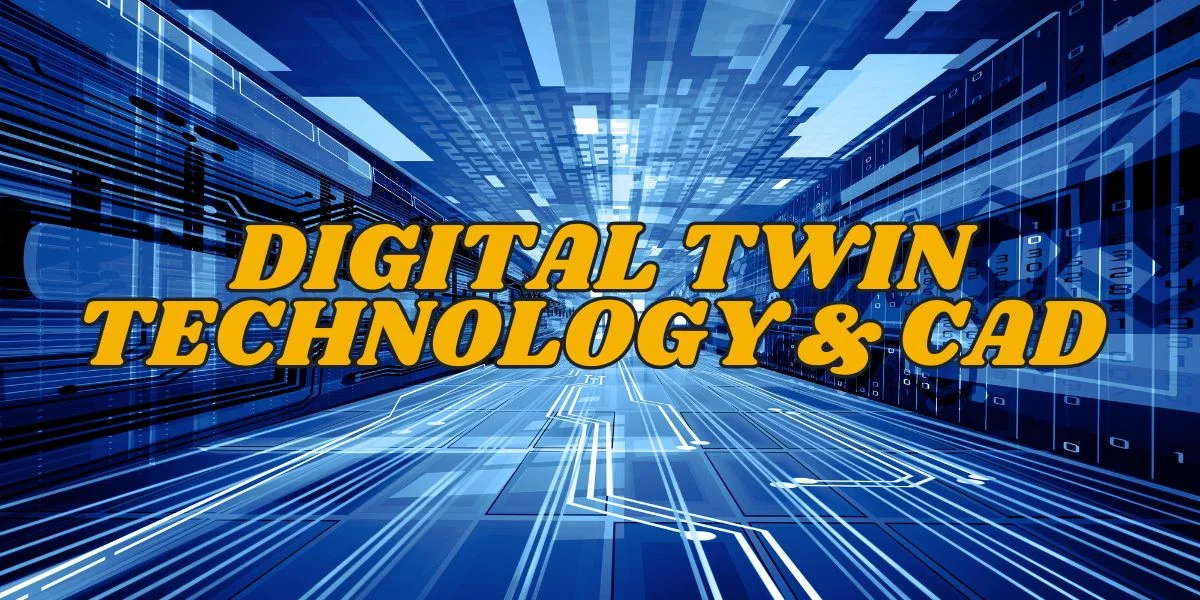Introduction
In today’s fast-evolving digital landscape, Digital Twin Technology and Computer-Aided Design (CAD) are revolutionizing engineering and manufacturing. The integration of these technologies allows businesses to optimize product design, enhance operational efficiency, and reduce costs. This blog explores the relationship between Digital Twin Technology and CAD, their benefits, challenges, and future trends.
Understanding Digital Twin Technology
A digital twin is a virtual representation of a physical object, system, or process that spans its entire lifecycle. It continuously updates with real-time data and leverages simulation, machine learning, and artificial intelligence to optimize decision-making. This technology enables businesses to analyze performance, predict failures, and improve overall efficiency.
Components of Digital Twins:
- Physical Asset – The real-world counterpart.
- Digital Model – A virtual representation created through CAD modeling for digital twins.
- Data Connection – Uses IoT sensors to capture real-world data.
- Analytics & AI – Predicts performance and future outcomes.
Overview of Computer-Aided Design (CAD)
Evolution of CAD:
CAD (Computer-Aided Design) has been an integral tool in engineering since the 1960s. Initially developed for 2D drafting, CAD evolved into powerful 3D modeling software, enabling precise digital twin simulation for product design and testing.
Role of CAD in Product Development:
- Design & Prototyping – Creates detailed 3D models.
- Simulation & Analysis – Assesses real-time data performance.
- Manufacturing Integration – Supports 3D printing and CNC machining.
Digital Twin vs. CAD: Key Differences
While CAD focuses on design and modeling, digital twins incorporate real-time data and simulation to reflect a product’s actual state. Key differences include:
- CAD models are static, while digital twins evolve with real-time data.
- Digital twins can predict performance and failures, whereas CAD is primarily for design.
- Integration of Digital Twin and CAD enhances the entire lifecycle of a product.
Integrating Digital Twin Technology with CAD
Benefits of Integration:
- Enhances design accuracy by incorporating real-world feedback.
- Optimizes product performance through simulation.
- Enables predictive maintenance, reducing operational costs.
Tools and Platforms:
Several CAD software solutions now support digital twin applications in engineering, such as:
- Autodesk Fusion 360
- Siemens NX
- PTC Creo
- Dassault Systèmes CATIA
Benefits of Digital Twins in Design and Engineering
Key Advantages:
- Improved Performance Monitoring – Continuous updates with real-time data.
- Predictive Maintenance – Identifies failures before they occur.
- Optimized Design Processes – Faster iteration and reduced prototype costs.
- Enhanced Collaboration – Engineers, designers, and manufacturers can work seamlessly.
Real-World Example:
Boeing uses digital twin technology to simulate aircraft performance, improving fuel efficiency and reducing maintenance costs.
Applications of Digital Twin Technology in Various Industries
- Manufacturing: Optimizes production lines and reduces waste.
- Construction: Enhances Building Information Modeling (BIM) for efficient urban planning.
- Aerospace: Assists in CAD modeling for digital twins to simulate extreme conditions for spacecraft.
Challenges and Considerations
Despite its benefits, adopting digital twins presents challenges:
- Data Security Risks – Managing sensitive real-time data requires strong cybersecurity measures.
- Integration Complexities – Combining CAD and digital twin simulation can be technically demanding.
- High-Quality Data Requirements – Inaccurate data affects performance predictions.
Future Trends in Digital Twin Technology and CAD
Emerging Technologies:
- AI and Machine Learning – Enhancing digital twin simulation.
- 5G & IoT Connectivity – Improving real-time data accuracy.
- Augmented & Virtual Reality – Enabling immersive CAD modeling for digital twins.
Industry Adoption:
Companies like Tesla leverage digital twins for real-time vehicle diagnostics, reducing downtime and maintenance costs.
Conclusion
The integration of Digital Twin and CAD is transforming the way industries design, simulate, and optimize products. With advancements in AI, IoT, and real-time data, the future of The integration of Digital Twin and CAD is transforming the way industries design, simulate, and optimize products. With advancements in AI, IoT, and real-time data, the future of digital twin technology promises greater efficiency, cost savings, and innovation across various sectors. Embracing these technologies will be crucial for businesses looking to stay competitive in the digital era. promises greater efficiency, cost savings, and innovation across various sectors. Embracing these technologies will be crucial for businesses looking to stay competitive in the digital era.

